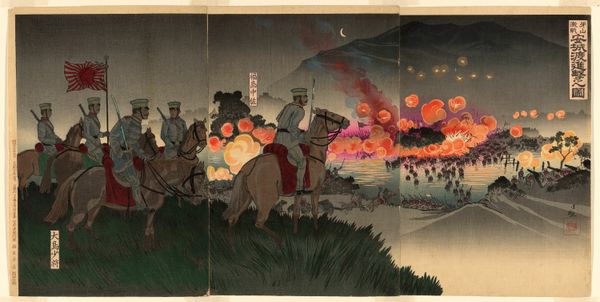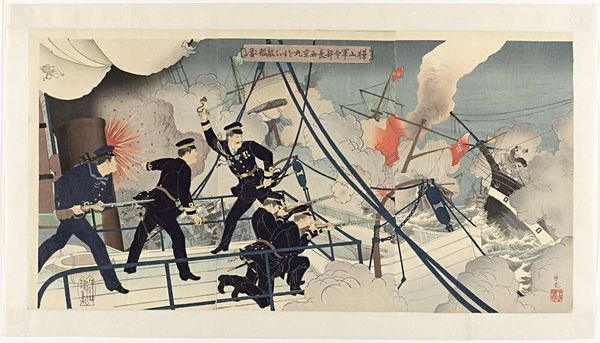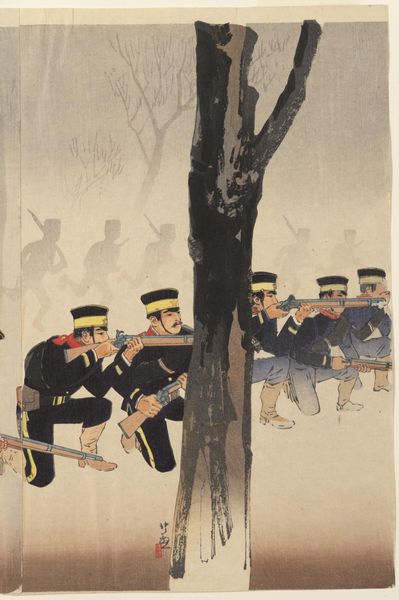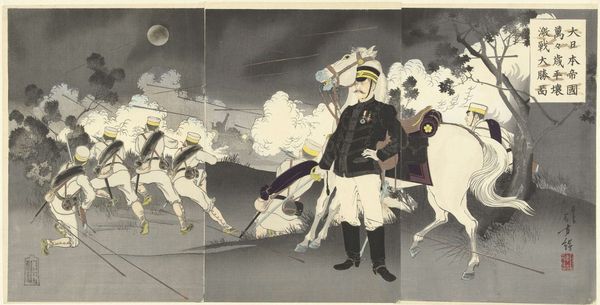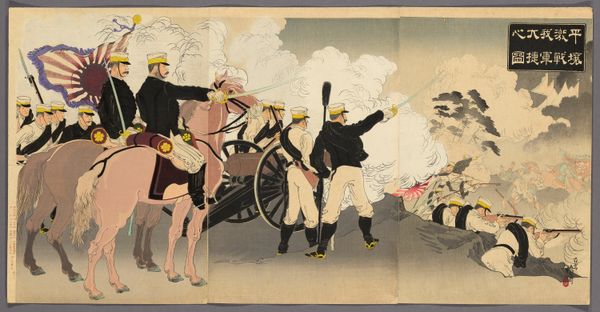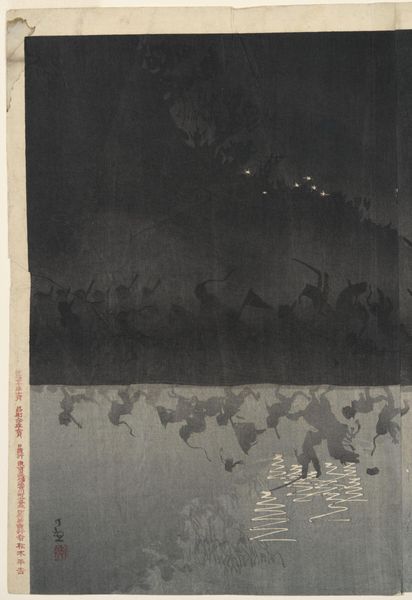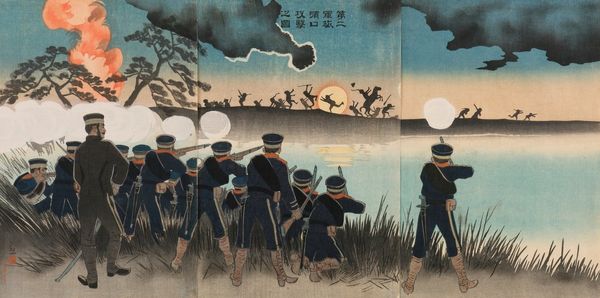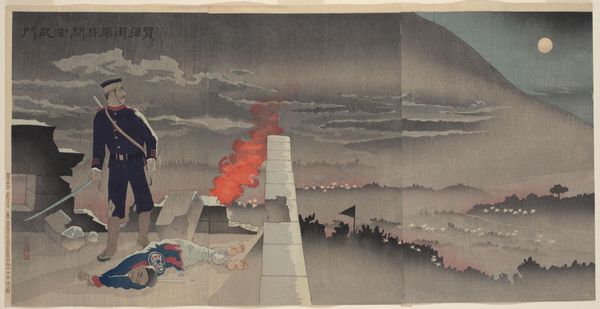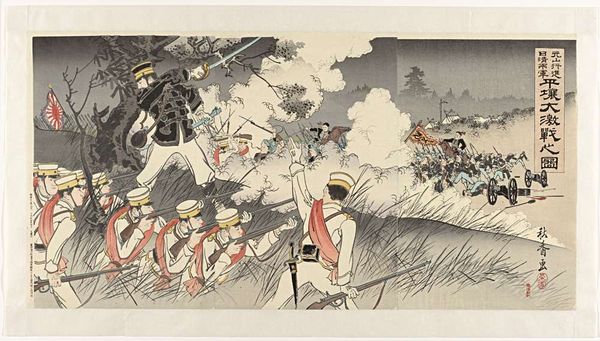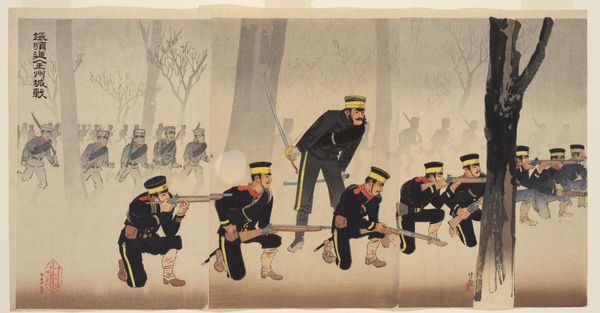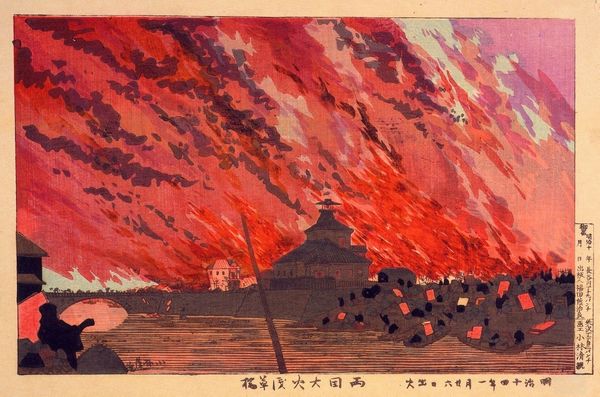
Copyright: Public Domain: Artvee
Curator: Right now we’re looking at "The Fall of Chinchow Fort," a striking woodblock print with watercolor from 1894, created by Kobayashi Kiyochika. Editor: My goodness, it’s dramatic. I’m immediately drawn to the contrast – the cool, almost melancholic blues and purples against that explosion of fiery orange. Gives a sense of impending doom. Curator: Kiyochika was working during a period of intense modernization in Japan, a time when traditional woodblock printing was starting to intersect with more Westernized styles. The Russo-Japanese War became a popular theme, signifying imperial growth. Editor: I notice the use of triptych. The eye definitely journeys left to right – from that stoic commander by the tree, contemplating the field. The next panel shifts into that inferno where combat unfolds… and finally culminates on that hill, a silent sea of soldiers watching as the spoils of war are realized. Curator: Exactly! Note how Kiyochika utilizes perspective, something not as prevalent in earlier ukiyo-e prints. He almost places us among the observers, reinforcing our connection to the event. There are layers of symbolism. Notice how that central figure seems to have no emotion – it's as if they're simply playing their role in a historical march of destiny. Editor: It's chilling. A reminder that we're all often just playing bit parts in somebody else's drama. But even so, the dynamism created by those watercolors – they speak of the intense emotion bubbling just under the surface. A war-torn painting almost contradicting itself in terms of raw intensity versus passive emotion. Curator: Kiyochika uses these visual cues, these moments, as commentaries on progress and national identity. There's pride intertwined with that inherent unease about the consequences. Editor: Looking at this, I’m strangely captivated. It is a visual representation of conflict, pride, and the muted echo of human stories played out amidst something so chaotic. You almost miss the details if you don’t pay close attention, because the scope feels both wide and intimate. Curator: These prints, while historical records, also serve as visual repositories for how cultures grapple with pivotal events in time. They are powerful visual markers on culture's journey. Editor: Agreed. And what’s so powerful is how such a static medium can speak volumes about movement, emotion, and memory.
Comments
No comments
Be the first to comment and join the conversation on the ultimate creative platform.
